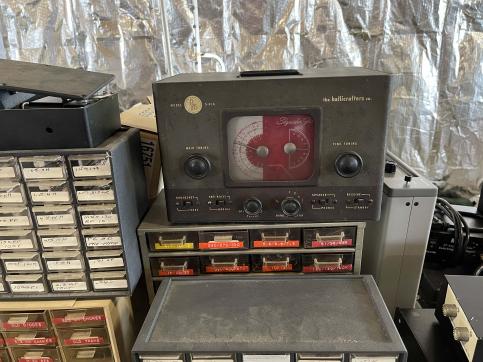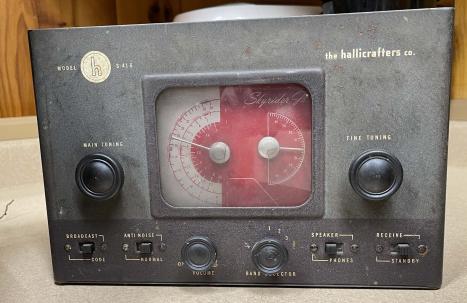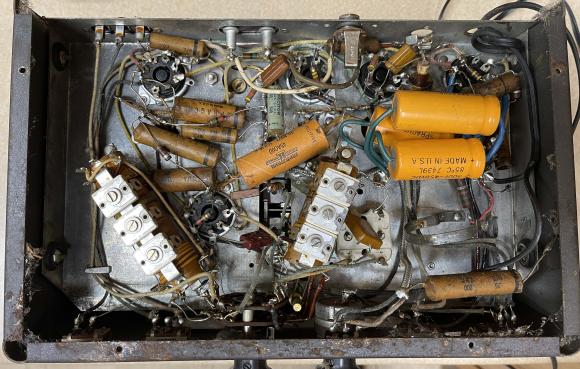- 2022
- Aug
- 7
The Hallicrafters S-41G Skyrider Jr.
I’ve been looking for an AA5 “Shockbox” radio for a while now, but these seem to be getting kind of rare, which is odd considering how many of those things were made. So I’ve decided to instead look for an older multi-band unit. While this one wasn’t exactly what I wanted, it was cheap enough that it will work until I find a better example.
The Hallicrafters S-41G “Skyrider Jr.” was introduced right after WWII as a low-cost entry level receiver, alongside the company’s Echophone EC-1B which is electrically and mechanically identical. This unit lasted for a few years, and was replaced with the more common and more familiar S-38 line, which lasted for 6 models (S-38 through S-38E.)
This unit is in “acceptable” condition, and is complete with original knobs, a usable face, and limited damage to the chassis. It was purchased for $25 on August 6th, 2022 at the Columbus, Ohio hamfest.
When I first saw it, the friend I was with said “That looks like it sat around in a shop for years as the shop radio.” Turns out that was correct, the gentleman that sold it said it was in his father’s shop for years, but his father was unable to answer any questions about it, being in a state of mind that didn’t allow for much these days. That’s kind of sad to know I won’t be able to get any history, but that’s how it usually goes with these things.
First thing I did when I brought it home, of course, was to give it a quick lookover and then plug it in. Unsurprisingly, it came right up, and after getting the crud of the ages out of the switches, I was able to receive one of the strong local AM stations without any antenna connection. It must still be decently aligned.
The radio had the “science fiction squeal” as you turned the dial. Bad AGC capacitor, but that’s expected. Then the volume started dropping. Grid coupling capacitor was leaky and slowly allowing voltage through, cutting off the tube. I was about ready to turn if off, as I don’t want to destroy the tubes when it went POP and smoked. Capacitor blew out. Since the volume didn’t change, I expect it was the one across the line. But I rapidly pulled the plug anyway because it was shown to be working and that’s what I needed to see.
What’s a good initial showing without tearing the bottom off and baring the goods to the world? So that’s what I did next, and probably should have done first.
There were those big orange replacement filters. That was visible from the back, so no surprise. These were 450VDC capacitors with a 1974 date code, and decently installed. The voltage was far too high for the rectified line, but there are multiple schools of thought on this. One says go to the max, others say keep the voltage near the working voltage. The thought behind this is if you don’t give the capacitors their rated voltage, they can lose their ability to be a capacitor, and will try to “reform” and become capacitors again every time you apply voltage. I’ve always followed that rule, so a B+ of 150VDC probably would net a 200WVDC capacitor. In any event, these will go and get replaced with modern (and smaller) capacitors. Since these are nearing 50 years old themselves, it’s probably time regardless.
The other changes were the addition of a new line cord (sans the probably long dried out grommet in the chassis it went through) and a phone jack across the pin terminals originally placed by the factory. Not bad, usually these things are just a mess inside.
What’s going to happen next is the finding of a schematic. While I’d like to get the original Riders or Sams set for the radio, that may be difficult. There are a number of offerings online, so it’s just a matter of finding one that’s not a honeypot and downloading it. Then, the process of determining which parts need to be replaced begins - but that’s probably a job for this winter when the snow flies and the days are short. But check back in a few months for more on this set.


